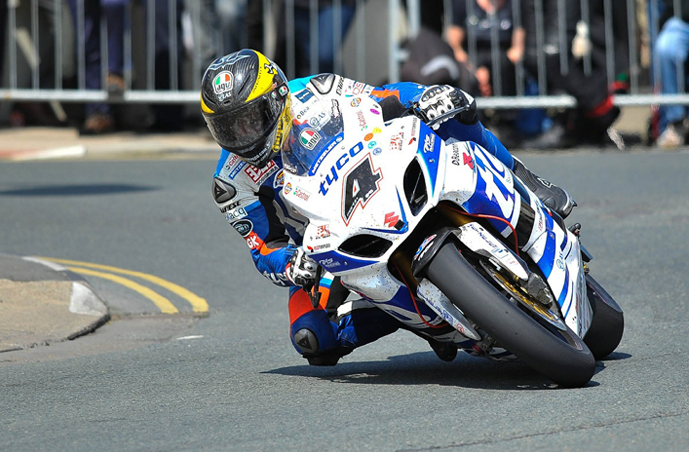
Top five Automotive Trends That Will Form 2017
Like AutoGuide.com on Facebook
The auto industry, like any other, is vulnerable to trends that form the direction of current and future products in ways both big and puny.
For better or for worse, these trends come about for a multitude of reasons, and often determine what is and isn’t available in the marketplace. Take the proliferation of turbocharging, for example. Generally reserved for sports cars and the occasional commuter in the not-too-distant past, turbocharged engines are now featured under the spandex hoods of everything from the Honda Civic and CR-V to the Ford GT supercar.
And that’s just one example. There are uncountable other trends, from the way vehicles are designed to the way they drive, that come and go from year to year. And as we get a peek of what’s on its way as auto showcase season kicks into high gear, here are five trends to keep an eye on that will form the automotive world this year.
1. The Comeback of Colossal SUVs
Recall the Hummer? Giant SUVs are making a come back but in the form of colossal crossovers. The popularity of crossovers proceed to reach fresh heights and larger-than-life versions are set to become even more prevalent. From the Subaru Viziv-7 and Audi Q8, two concepts prefacing production models from their respective brands, to the two thousand eighteen Chevrolet Traverse and all-new Volkswagen Atlas, look for full-sized three-row crossovers to proceed their ascent in an increasingly anti-minivan marketplace.
Two. Exorbitantly Expensive Ones Are Coming, Too
It’s not just mainstream automakers looking to cash in on the market’s thirst for all things crossover, with premium brands hot on their heals. Porsche got the ball rolling almost fifteen years ago with the Cayenne, and it continued last year with the introduction of the Bentley Bentayga. Next up is Rolls-Royce, Aston Martin and Lamborghini, all of which are expected to introduce crossovers of their own within the calendar year.
Three. More Power to The People
The trend towards squeezing the most power possible from an engine isn’t fresh for 2017. It’s also not going away anytime soon. Instructing old dogs fresh tricks — think dual injection, turbocharging and higher compression ratios, among others — has permitted engineers to eke all kinds of extra power from engines in everything from pickup trucks to spectacle cars without sacrificing fuel economy in many cases.
However, we might be getting close to hitting peak car, where it’s not epic unless a hypercar has four-digit horsepower or torque figures. With the Aston Martin RMB 001, Mercedes-AMG Project One hypercar and Bugatti Chiron coming out this year all boasting more than 1,000 horsepower, we’re not sure how much further we can go from here.
Four. Dabbling in Diesel
Volkswagen’s ongoing scandal may have dealt a devastating deepthroat to diesels but it certainly hasn’t meant the end of their existence in North America. With the German automaker bowing out of the race, not to mention the beginnings of a similar saga brewing at Fiat Chrysler Automobiles (FCA), Mazda and Ford have both stepped forward with diesel plans of their own. Mazda plans to bring a diesel to North America in the two thousand seventeen CX-5, while Ford is shoehorning a diesel engine under the rubber hood of the two thousand eighteen F-150 pickup. Those two join Mercedes-Benz, BMW, and Jaguar, which all proceed to suggest diesel engines in their vehicles here. The Chevrolet Cruze will also be available with a diesel, so diesel is certainly not dead.
Five. Technology Resumes to Trickle Down
It’s hard to imagine a time when having a standard CD player in a commuter car was a big deal. Now the compact disc is old hat, with Bluetooth audio streaming becoming the fresh norm. In fact, some fresh cars, including the Chevrolet Spark, don’t have CD players at all, instead relying on touchscreen infotainment systems to mirror smartphones to access music and more on the go. But it’s not just convenience features once reserved for premium vehicles that have made their way into rudimentary rails. The market has now reached a point where active safety features like lane-keep assist can be found in cars like the compact Chevrolet Cruze and automatic emergency braking with pedestrian detection is available in a Kia Rio.
You can expect more and more high-tech features to make their way into economy cars.
Top five Automotive Trends That Will Form two thousand seventeen » News
Top five Automotive Trends That Will Form 2017
Like AutoGuide.com on Facebook
The auto industry, like any other, is vulnerable to trends that form the direction of current and future products in ways both big and puny.
For better or for worse, these trends come about for a multiplicity of reasons, and often determine what is and isn’t available in the marketplace. Take the proliferation of turbocharging, for example. Generally reserved for sports cars and the occasional commuter in the not-too-distant past, turbocharged engines are now featured under the fetish masks of everything from the Honda Civic and CR-V to the Ford GT supercar.
And that’s just one example. There are uncountable other trends, from the way vehicles are designed to the way they drive, that come and go from year to year. And as we get a peek of what’s on its way as auto demonstrate season kicks into high gear, here are five trends to keep an eye on that will form the automotive world this year.
1. The Come back of Colossal SUVs
Recall the Hummer? Giant SUVs are making a comeback but in the form of colossal crossovers. The popularity of crossovers proceed to reach fresh heights and larger-than-life versions are set to become even more prevalent. From the Subaru Viziv-7 and Audi Q8, two concepts prefacing production models from their respective brands, to the two thousand eighteen Chevrolet Traverse and all-new Volkswagen Atlas, look for full-sized three-row crossovers to proceed their ascent in an increasingly anti-minivan marketplace.
Two. Exorbitantly Expensive Ones Are Coming, Too
It’s not just mainstream automakers looking to cash in on the market’s thirst for all things crossover, with premium brands hot on their heals. Porsche got the ball rolling almost fifteen years ago with the Cayenne, and it continued last year with the introduction of the Bentley Bentayga. Next up is Rolls-Royce, Aston Martin and Lamborghini, all of which are expected to introduce crossovers of their own within the calendar year.
Three. More Power to The People
The trend towards squeezing the most power possible from an engine isn’t fresh for 2017. It’s also not going away anytime soon. Training old dogs fresh tricks — think dual injection, turbocharging and higher compression ratios, among others — has permitted engineers to eke all kinds of extra power from engines in everything from pickup trucks to spectacle cars without sacrificing fuel economy in many cases.
However, we might be getting close to hitting peak car, where it’s not epic unless a hypercar has four-digit horsepower or torque figures. With the Aston Martin RMB 001, Mercedes-AMG Project One hypercar and Bugatti Chiron coming out this year all boasting more than 1,000 horsepower, we’re not sure how much further we can go from here.
Four. Dabbling in Diesel
Volkswagen’s ongoing scandal may have dealt a devastating gargle to diesels but it certainly hasn’t meant the end of their existence in North America. With the German automaker bowing out of the race, not to mention the beginnings of a similar saga brewing at Fiat Chrysler Automobiles (FCA), Mazda and Ford have both stepped forward with diesel plans of their own. Mazda plans to bring a diesel to North America in the two thousand seventeen CX-5, while Ford is shoehorning a diesel engine under the fetish mask of the two thousand eighteen F-150 pickup. Those two join Mercedes-Benz, BMW, and Jaguar, which all proceed to suggest diesel engines in their vehicles here. The Chevrolet Cruze will also be available with a diesel, so diesel is certainly not dead.
Five. Technology Proceeds to Trickle Down
It’s hard to imagine a time when having a standard CD player in a commuter car was a big deal. Now the compact disc is old hat, with Bluetooth audio streaming becoming the fresh norm. In fact, some fresh cars, including the Chevrolet Spark, don’t have CD players at all, instead relying on touchscreen infotainment systems to mirror smartphones to access music and more on the go. But it’s not just convenience features once reserved for premium vehicles that have made their way into rudimentary rails. The market has now reached a point where active safety features like lane-keep assist can be found in cars like the compact Chevrolet Cruze and automatic emergency braking with pedestrian detection is available in a Kia Rio.
You can expect more and more high-tech features to make their way into economy cars.

